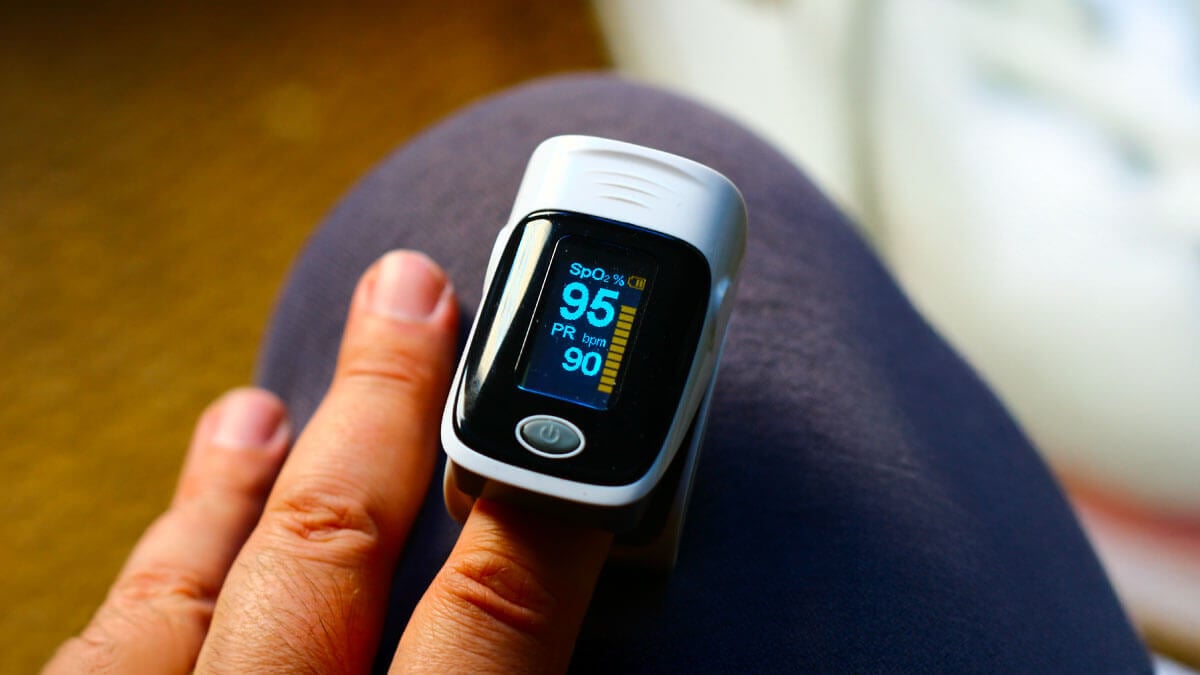
Any medical device manufacturer developing new products comes across design verification and validation. They are essential stages during the design control of a new medical device. Design controls are a series of steps and processes during the development of a medical device that ensures that new devices are safe and fulfill user needs. They document to the regulatory authority that your device is thoroughly well-designed and tested vigorously to ensure its safety.
While the term "Design controls" is mainly used by the Food and Drug Administration, FDA, ISO 13485:2016 includes the same principles in its section 7.3 Design and Development.
Though design verification and design validation sound deceptively similar, they are different processes. Design verification confirms that a medical device meets its specified design requirements, while design validation ensures the device fulfills its intended use in real-world conditions.
In this guide, we’ll break down the verification vs validation medical device distinction and share practical tips to help you avoid the most common pitfalls. And if you'd like to learn how they fit into the big picture, check out our QARA guide for medical device quality management systems.

Design verification
According to the FDA, design verification means confirming "…by examination and provision of objective evidence that specified requirements have been fulfilled."
Design verification ensures that your design output matches your design input. Essentially, you verify that you designed the device right and to the predetermined design specifications. Design verification is performed during device development and includes testing the entire system and any subsystems and units within the system.
Design verification typically includes product testing, but there are other officially approved verification activities, such as inspections or analyses.
Design verification is typically made up of five distinct steps:

1. Prep
Before you start, you must identify the best approach for your verification. This can include defining your outcomes and how you will measure them and considering how many resources and tools you will need for your verification.
2. Planning
Any design verification should be appropriately planned. This is a continuous step over your device's lifecycle, as the plan should be updated whenever there are changes to the design inputs.
3. Developing
This is where your device development begins!
4. Execution
You execute your meticulously planned tests and document your results. Any device defects should be resolved, resulting in new product releases. This is also where you create and document your traceability matrix to ensure all your design inputs have been identified, tested, and passed.
5. Reporting
You should always document your entire design verification process, resulting in a report at each phase of the verification that includes release reports, test results, and any issues discovered during the verification. The report should be reviewed, approved, and signed by relevant personnel after each verification phase.
Recommended learning: How to enhance traceability in medical device development.
Design Validation
According to the FDA, design validation is “establishing by objective evidence that device specifications conform with user needs and intended use(s).” It confirms that the finished medical device, when used as intended, safely and effectively meets the needs of the end user.
This process is performed after design verification and uses a production-equivalent version of the device to ensure it performs reliably in real-world scenarios. It typically includes user testing, simulated use studies, and sometimes clinical evaluations or trials, depending on the classification and risk level of the device.
Here are the key steps that usually make up the design validation process

Defining objectives
You should always clearly define your validation objectives. This involves identifying which user needs and intended uses must be validated, establishing measurable acceptance criteria, and linking each objective back to specific design inputs. Your objectives guide the entire validation effort and ensure alignment with both regulatory expectations and clinical realities.
Validation plan
The validation plan outlines the overall scope of validation, the specific methods to be used (such as usability studies or clinical testing), the resources and personnel involved, and the timeline for execution. The plan should also clarify how data will be collected, documented, and analyzed.
Creating protocols
Validation protocols should describe how each validation activity will be performed, under what conditions, and with what test equipment. They should specify the number of units to be tested, the test environment (e.g., clinical or simulated), and the pass/fail criteria for each test. Every protocol must be reviewed and approved before testing begins.
Testing
This is the fun part! This is where your planned tests are carried out using final or production-equivalent devices under actual or simulated use conditions. The testing may include usability testing with representative users, human factors studies, simulated clinical procedures, or even formal clinical trials, depending on the complexity and risk of the device.
Documenting
Record all test data, observations, and any deviations from the protocol in real time. Complete and accurate documentation is essential for traceability and is a key requirement during inspections or audits.
Analysis
Collected data is compared to the predefined acceptance criteria. Any failures or inconsistencies must be investigated and resolved. The analysis should determine whether the device meets user needs and intended uses, and whether any changes to the design, labeling, or instructions for use are necessary.
Validation report
Your validation report should include the original test protocols, execution records, test results, summaries of findings, and conclusions. it must also document any deviations or corrective actions taken and show clear traceability to the design inputs and risk controls.
Designated, qualified personnel—typically from quality assurance, regulatory affairs, and product development—must review the report, approve its contents, and sign off on the conclusion that the device meets its intended use.
Recommended learning: Your guide to design controls for medical devices.
Best tips for design verification and validation
It is perfectly possible to have a device that passes design verification but not design validation or vice versa. While they might seem similar, the two processes are not the same. In the context of a verification vs validation medical device approach, it’s essential to recognize them as separate steps within the design control process — each requiring its own best practices and evaluation criteria.
Design verification tips
- Thoroughly consider your device's intended use and how to achieve it. Every step of the design input process should reflect the desired outcome of the finished product.
- Consider what the conditions around the use of your device will be. Will it be placed in an OR, beside a hospital bed, in someone's home? Does it need to move with the patient? All the logistics surrounding your device will help you define the design input.
- Make sure your design inputs are measurable/testable. You need to be able to verify your design inputs through testing or analyses to match them to your design output.
- Be clear and precise when writing your design inputs. Even the slightest hesitation or ambiguity can cause significant issues during the design verification testing. Spending a little extra time making sure everything is documented clearly beforehand is better.
Design validation tips
- Devices used for design validation testing should be manufactured in the same production units used going forward. The same production environment, production line, drawing, and specifications should be used to ensure the validated device matches devices going to market.
- Clinical evaluation is an integral part of design validation. Devices should be tested under real-life conditions or simulated use (for example, mathematical modeling). End users should be involved in real-life testing to assess the device's design under real-life conditions. In your clinical evaluation, your device should be compared to other devices using similar technology and design.
- Labeling and packaging are also part of the design validation and should be tested.
You can also do some things to help yourself through the entire verification and validation phase, which are not directly related to the processes themselves, but to how they are managed.
- Start planning and testing as early as possible. The sooner you can start planning and testing, the sooner you might identify technological or process issues that can become significant issues down the line.
- Standardize nomenclature to avoid ambiguity and misunderstandings between departments and personnel.
- Choose the right tools. You want tools you can customize to your method, process, and tools that make sense for your company and resources. There are many development methodologies to choose from, and whichever one you choose, make sure you select the right tools to go along with it.
Ongoing verification and validation: Adapting to change across the product lifecycle
Verification and validation (V&V) are not static, one-time events performed only during initial development. Instead, they are dynamic processes that should evolve alongside your medical device throughout its lifecycle.
Once your device is on the market, design changes—whether large or small—may require you to revisit and repeat verification and/or validation activities to ensure continued safety, effectiveness, and compliance.
Regardless of the reason or the timing of the change, you should evaluate its impact on the device’s performance, safety, and intended use.
For example:
- Minor component changes may only require selective re-verification of affected functions.
- Labeling updates might prompt re-validation of user understanding and instructions for use.
- Software updates—especially those affecting user interface or clinical algorithms—may require both regression testing (verification) and real-world usability or clinical validation.
Each change must be assessed for risk using your established risk management procedures. If the risk profile of the device is altered, you may need to revise your risk controls and confirm their effectiveness through V&V.
Finally, all repeat or updated V&V activities must be fully documented. This includes updated protocols, test results, impact assessments, justification for the scope of testing, and formal approvals.
Learn more about key processes for medical device design controls and other related concepts by watching our “Medical Devices: Deep dive into Quality Management Systems (QMS)” training series:
Key takeaways
- Validation confirms real-world use
Design validation ensures that the final, production-equivalent medical device meets user needs and performs safely and effectively in its intended environment. It’s not just about checking specifications—it’s about proving the device works for the people who will actually use it. - Use the right methods for your device
Validation methods should reflect how the device is actually used. This might include usability studies, simulated use, or clinical evaluations. The goal is to mimic real-world conditions as closely as possible to uncover any issues before the device reaches patients. - Validation is ongoing, not one-and-done
Design validation must be revisited whenever your device design changes, even post-market. Updates triggered by user feedback, risk changes, or CAPAs often require renewed validation to ensure continued safety and effectiveness.
Simplify validation with Scilife
Design validation is essential for ensuring your medical device is safe, effective, and ready for real-world use. it’s not just a regulatory checkbox—it’s a safeguard for patient outcomes and product success. By using the right validation methods and revisiting them throughout the product lifecycle, you stay compliant and proactive.
With Scilife’s QMS for medical devices, you can centralize all your design control activities, seamlessly manage validation documentation, link them to risk management, and maintain full traceability—all in one compliant, cloud-based platform.
Learn how Scilife can help streamline your validation process.






